- Home
- Timothy Egan
Breaking Blue Page 2
Breaking Blue Read online
Page 2
“What kind? How big, Bill?”
“Chippy stuff,” Parsons said. “Ten-dollar bills.”
For much of his life, Bill Parsons had convinced himself that he was different from the other officers. They were dirty. He was clean, the respected community leader. By the 1950s, Parsons believed that that crowd, from the 1930s, was out of his life for good; and so he thought the secret they had shared had left town with them. They could have hurt him in 1967, when he was named chief of police, but he heard nothing. Every decade further buried the story of what had happened in September 1935, until the truth was very deep and very distant.
“What else, Bill?” Bamonte asked, his voice a gentle prod.
Parsons looked into the eyes of his wife of forty-five years. Then he told Bamonte what he had just told Jerie.
“That killing from 1935 … we all knew about it. It was … one of us.”
To Jerie, who had long ago stopped asking her husband what went on inside police headquarters, the revelations of the last fifteen minutes were astonishing—not so much for what he said as for the fact of his saying it at all. There was natural law, there was man-made law, and then there was Cop Code. As every police officer knew, only one of these was absolute—above all, the commandment “Thou shalt never snitch on a fellow officer.” More than half a century after Bill Parsons’s initiation into the fraternity of lawmen, he was breaking the trust.
What’s more, he was naming names, dates, details. Bamonte’s tape recorder was running, and he took notes as well. His interest in the case went beyond historical curiosity, for he was also the sheriff of Pend Oreille County, where the 1935 killing remained an unsolved homicide in his jurisdiction. By 1989, it was the oldest active murder case in the nation, a probe that had occupied the time of three sheriffs and the director of the Federal Bureau of Investigation. Thus, as Bamonte’s graduate project entered its last phase, he was not just blowing dust from a corner attic of Washington while pursuing an academic degree. He was looking for a murder suspect in his county. Bamonte the scholar, reading microfiche until his eyes blurred and his head ached, was attempting to alter a small bit of history—the private motive of many tellers of the past. Bamonte, the Pend Oreille sheriff, was attempting to extract some measure of justice from it.
That same week in September 1989, there had been a story in the paper about drug gang members from Los Angeles moving to the Northwest; they would kill one another over the color of somebody’s hat, the story said. Imagine. But Parsons now recalled a day when one man would shoot another over a few pounds of stolen butter.
TWO
THE FIRST ACT
OF DEATH
AUTUMN 1935
2.
The Need for Botter
IN 1935, something happened to parts of the American West and midsection that only God in the foulest of Old Testament moods was supposed to be capable of causing: the land died. Green never came to those prairies and river valleys and meadows and former sea bottoms and high-elevation soil beds which had always brought forth grass and fields of knee-high perennials. Instead, barely a half-century after the first white farmers cut the ground with plow blades, the earth dried up and gathered itself into amber clouds of airborne dust. Some days, though the sun burned high overhead, much of the sky was dark, blackened by raging dust clouds. Streams disappeared; cows choked to death or went blind; corn curled and collapsed; leaves blighted and withered; trees stopped and surrendered to beetles and locusts. When the anemic spring alfalfa fields were exhausted and the reserves of hay depleted, there was nothing to feed the livestock. In Fort Worth, Texas, six hundred thousand head of cattle were shot, firing-squad style, and buried. Parched and emaciated, they were deemed not even fit enough to feed those thousands of Americans who found themselves without homes or hope in the Southwest.
This drought had begun in 1934, when the winter rains never came, and the winds carried soil from state to state, until there was a wall that could be seen a hundred miles away. A curtain of dust blew east across the Great Plains, dumping twelve million tons on Chicago, and then on to the Eastern Seaboard and out to the Atlantic Ocean, where the soil that was supposed to produce food from seed fell to the sea. By early 1935, the winter wheat, planted out of optimism and little else a few months earlier, came forth stunted and brown; there had been only a trace of snow during the cold months. Plow it under, the farmers were told; five million acres of winter wheat were destroyed. Start anew. But with what?
In the cities, where money could be made out of other money or from serving those who had it, the depression had started with the stock-market collapse of 1929. In ten weeks, the market shed half its value, and shareholders lost $40 billion—more than eight times as much as the entire federal budget of the time. Life savings were wiped out; pension funds disappeared; banks folded like cheap tents in a gust. Earlier that year, Herbert Hoover had been sworn into office with the boast that “Americans are nearer to the final triumph over poverty than ever before in the history of any land.”
In the new farmlands of the West, hard times had hit well before 1929; the economic drought arrived just after the end of World War I, when there was a surfeit of farmers and food. While city dwellers practiced the silly sophistications of prosperous life in the 1920s—flapping and flagpole sitting and bathtub-gin parties—farmers suffered through one inexplicable disaster after another. There were no Roaring Twenties, no New Era, no giddy exploration of leisure’s edge for those who tilled the ground. By 1935, the worst agricultural depression in this country founded by farmers was in its fifteenth straight year.
The railroads and real estate promoters had lured the parents and grandparents of these farmer families from the old land in Ohio, Pennsylvania, New York, and other states with promises that the new land was virtually free and would come to life with little more than a few years’ care. It was an arid stretch of rumpled land, from Texas and Oklahoma on up through Colorado, Utah, Idaho, Montana, and the eastern halves of Oregon and Washington; but all that was needed to produce a crop was perhaps fifteen inches of rain a year, the promoters said. “Muscle is the only capital needed!” went one slogan. “This is by far the best money-making country in America” was the banner across the Northern Pacific Railroad Company’s milk-and-honey depiction of Montana, Idaho, and eastern Washington.
So the first of the farmer families came, immigrants and Civil War veterans, staked off small homesteads with barbed wire, put potatoes in the ground, grazed a few head of cattle, and turned over the bunchgrass. Always, the wind blew. For a few years, the soil responded well. But then this land, which had fed the natives for centuries—the natural sod nurtured bison and grouse and brought forth edible bulbs—turned to powder. Without the root structure of the short grass to hold the soil down, it disappeared.
By early February of 1935, the great dust clouds had started up again, a return of the tantrum from the year before, and kicked across the land, ripping up the carpet of what had been spared from the previous year’s drought. Dust blew into unpainted frame homes and covered everything—dishes, lamp shades, family bibles—and it stung the eyes and lacerated the skin. One storm in March scooped out twice as much soil as had been dug to create the Panama Canal. Through Colorado and Nebraska and Kansas (where a train was derailed by a fierce blow), the sky rained dust. Through Texas and Oklahoma and Arkansas, cotton fields blew away; orchards browned and weakened and collapsed.
By spring, the new land was leathered; even the cursed tumble-weed, Russian thistle, could not grow in 1935. Near the end of the year, more than 850 million tons of topsoil—enough to layer 6 million acres with an inch of dirt—had been ripped from the surface of the new land. In Texas and Oklahoma, four million acres were abandoned. A million people left their homes. Farm prices fell to the lowest point in history, then climbed as food became scarce. Those who had held on by diversifying their crops, or lending their muscle out for hire, gave in. On their heels came swarms of grasshoppers and men from the banks, carrying promi
ssory notes. A farmer who could barely stay alive on rural subsistence now found himself on the road and unable to afford the food he hadn’t been able to give away a few years earlier.
Food riots broke out in several cities, mobs clamoring for something to eat; they were dispersed, in some cases, by riot police with tear gas. Families that had studied the hard face of a half-dozen acres for a generation now packed themselves into a house on wheels and set out for land where the rain was said to be reliable and life-renewing. Throughout 1935, they poured into California, Oregon, Washington, and Idaho. By train, they arrived in Spokane, the railroad and commercial hub of four states covering two hundred thousand square miles. Like the streams that fed the Columbia River from distant draws, desperate families channeled into the valley of the Spokane River.
With just under 120,000 people, Spokane in 1935 called itself “the Queen City of the Richest Empire in the Western Hemisphere.” The city was an infant, barely fifty years old, built around a triple-tiered waterfall that dropped through a rock canyon. It was isolated from the rest of the world by a fence of mountains: the Cascades to the west, the Selkirks to the north, the Bitterroots, the Coeur d’Alenes, and the Rockies to the east, and the trench of Hells Canyon to the south, where the Snake River cut the deepest gorge on the continent. Spokane’s ceaseless promoters, whose grandfathers had grabbed the valley from the Indians after a terror campaign that consisted of summarily hanging the native leaders, slaughtering all their horses, and burning caches of winter food, billed their town as a diamond in the Depression rough, the center of that Inland Empire which produced a third of the nation’s lead, a fourth of its silver, a fifth of its apples, a tenth of its wheat, a fifth of its water power. The biggest stands of white pine—cut down to make matchsticks—were just across the border in Idaho, as was the biggest silver mine in the world, the Bunker Hill tunnels into the Coeur d’Alene Mountains.
The farmer families had clambered aboard trains, packing pots and pans and bits of dried food, dodged the head-busting goons, and then emerged from week-long journeys in the rail yards east of Spokane. They considered themselves lucky; many train-riders never survived the trip. On one line alone in 1935, the Northern Pacific, more than 150 people were killed while trying to hop aboard. Every day brought families, some wearing everything they owned, to the Hillyard section of town. A generation earlier, these railroads had deposited Italians, Germans, Swedes, Jews, and Irish, most of them with a little stake. For $350 a family could buy a home and twenty acres. Now the railroads brought to Spokane a new breed of passenger, a reluctant hobo: the American farmer.
When they arrived in the valley of wheat and orchards in a city whose fine stone buildings were built with money from farmers in the Palouse and silver miners in the bordering mountains, they found what they had left behind: a land sick with thirst. Spokane’s September of 1935 was the driest in half a century. The sky was clouded by smoke, drifting in from the forest fires that raged in the surrounding pine forests. When the fires weren’t started by lightning, they were started by hungry men looking for work. President Franklin D. Roosevelt was looking to find jobs for the 13 million unemployed—one out of every four Americans of working age. A fire on national forest land meant a fire crew on a federal payroll would be dispatched to the woods. So there was always somebody who made sure the pine forests of the Inland Empire were burning. Governor C. Ben Ross of Idaho used National Guard troops to patrol his state’s forests against arsonists, but the big pines continued to burn.
And where was all the water that was synonymous with the Pacific Northwest? Certainly not on the east side of the Cascades. Instead of black earth and plump streams, the migrants found dust devils of whirling wind and parched irrigation ditches. In Green Acres, the orchards outside Spokane, brown fruit rotted on trees, spoiled by sun spots. West of town, in the treeless sage country, coyotes, jackrabbits, and rattlesnakes roamed across farm fields gone fallow. In Idaho—where the suicide rate had gone up 600 percent since 1930—a mob of farmers dynamited a dam whose reservoir of irrigation water was siphoned off for the exclusive use of a few large landowners. Governor Ross declared martial law and threw the farmers into jail. A local jury refused to convict them. Deep inside Idaho’s Sawtooth Mountains, another group of angry men blew up a dam on the Salmon River that blocked chinook from spawning at the end of a nine-hundred-mile journey from the Pacific. In the Northwest, during the worst of times, there were always king salmon to keep people alive; the saboteurs justified their action by saying they preferred wild fish to breadlines.
Around Othello, in the heart of eastern Washington’s wheat country, land prices fell to thirty-five cents an acre—and still there were few takers. Without water, the soil was worthless. In 1935, for the first time in memory, America imported wheat.
And where were all the jobs? The mines limped along, with skeletal crews scraping out silver, ore, and lead which sold for dismal prices. With few people building new homes, demand for timber was anemic. The most visible product of the “richest empire” was apples, and they moved, sold by sad-faced street vendors on every corner in downtown Spokane, for a nickel apiece. It was a form of charity.
One morning in August of 1935, a headline in the Spokane Chronicle—one of two daily newspapers in town owned by the powerful Cowles family—told readers what many already knew: SPOKANE BUTTER SHORTAGE LOOMS. “Creamery men report that a serious scarcity of butter is developing in Spokane territory,” the story said. With farms folding and the land dying, even butter was scarce in the new land. Prices reached forty cents a pound—more than double the cost of one year earlier. For the poorest of working families, those who labored cutting cords of firewood for a dollar a day or picking apples for five cents a bin, a week’s supply of butter, if they could find it, meant handing over a day’s wages.
Worse, much of the butter that had been stockpiled was now being taken in a series of creamery burglaries. In the dead of night, thieves backed up trucks to creamery entrances, broke into the buildings, and hauled away huge loads of butter, cheese, and cream. Nearly half a dozen such burglaries took place in August and early September. Who would steal butter from farmers? the local people asked themselves, aghast. Although police had few leads, they had some ideas. In the rail yards, the new arrivals, the farmer families, had been stealing coal to keep the fires and stoves in their cardboard and tin hovels warm at night. Everybody knew how desperate they were. Throughout hamlets of the rural West, there was serious talk of violent revolution.
And there was a saying, muttered around campfires in the rail yards east of Spokane, the city’s own Hooverville, where upwards of two hundred and fifty people a day arrived from the Dust Bowl: “An empty stomach does not recognize the law.”
3.
Cop Code
FRESH ON A JOB that promised not only a guaranteed salary of twenty-seven dollars a week but clean clothes as well, Bill Parsons was given a leather strap, brass knuckles, an oak billy club, and a six-chamber, five-inch-barreled, .38-caliber Smith & Wesson, and was introduced to the routine of a lawman in a town staggered by the sixth year of the Great Depression. Outside the city limits, creameries were getting knocked off. Nobody had ever seen anything like it, a series of quick strikes. Inside the city, cafes and diners were broken into and large quantities of butter taken. Some merchants believed that one gang was behind the dairy heists; they seemed systematic.
In 1935, the most common crime in Spokane was vagrancy. As defined by Washington state law, a vagrant was a person without visible means of support; and in the middle of the decade that was supposed to bring an end to poverty, nearly half the adults in the inland Northwest were technically criminals.
There was a simple order to this universe of broken families and uniformed enforcers in Spokane: a policeman was prosecutor and judge, jury and executioner. It was up to the patrolmen and detectives to decide who should be rousted out of the cardboard shacks and canvas tents along the river’s shore—who should be plucked fro
m the ranks of emaciated migrants, banged across the head, and made into a usual suspect—and who should not. Gypsies were jailed for telling stories, and union organizers were hustled away from small rallies and sent packing with nothing but bruised shins to show for their visit to Spokane.
Vagrancy was the nightstick of the foot patrolman, wielded freely against the outsiders whose presence was so threatening. It was not uncommon for a judge to give somebody a six-month prison term for vagrancy. The problem was, the city could throw you in jail, but once you were there it couldn’t afford to feed you. Although more than twelve hundred arrests were made every month in Spokane for a variety of crimes, the city budgeted no more than three hundred dollars a month to feed all the prisoners. It was cheaper, and certainly more expedient, to squeeze a suspect—extorting sex, food, change, or the grocery scrip that had been substituted for money—than to bring him into jail to starve or survive on potato sandwiches. By one official estimate, more than $100,000 a year was spent bribing Spokane police officers in the mid-1930s—twenty-seven times the annual amount spent on jail food.
Around the city, posters had advertised a $15,000 reward for information leading to the capture of John Dillinger, the bank robber who’d been wending his way through the West. Holding a submachine gun in one hand and a pistol in the other, Dillinger presented a formidable challenge in the poster. When word had it that he was passing through Spokane, every cop on the 120-man force was drawn into the manhunt. They found not a trace of Dillinger, who stood only five foot four inches tall but was a giant of the type of diversionary crime that kept so many American minds off their hollow stomachs. The feds finally caught up with him in Chicago—a city whose most prominent soup kitchen was funded by its most prominent gangster, Al Capone—where he died in a shootout. The reward money went unclaimed.

 The Immortal Irishman
The Immortal Irishman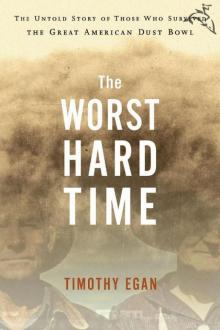 The Worst Hard Time: The Untold Story of Those Who Survived the Great American Dust Bowl
The Worst Hard Time: The Untold Story of Those Who Survived the Great American Dust Bowl The Good Rain: Across Time & Terrain in the Pacific Northwest
The Good Rain: Across Time & Terrain in the Pacific Northwest Breaking Blue
Breaking Blue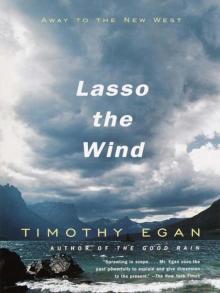 Lasso the Wind: Away to the New West
Lasso the Wind: Away to the New West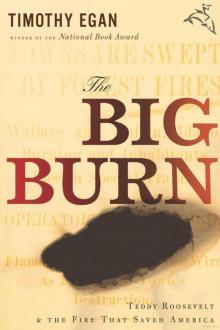 The Big Burn: Teddy Roosevelt and the Fire That Saved America
The Big Burn: Teddy Roosevelt and the Fire That Saved America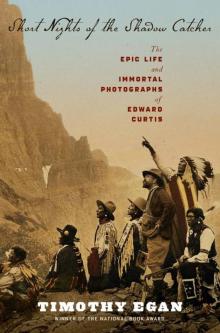 Short Nights of the Shadow Catcher
Short Nights of the Shadow Catcher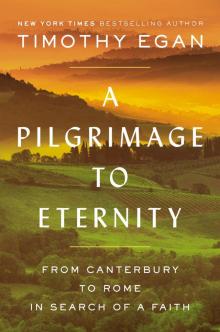 A Pilgrimage to Eternity
A Pilgrimage to Eternity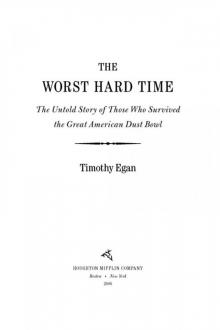 The Worst Hard Time
The Worst Hard Time The Big Burn
The Big Burn